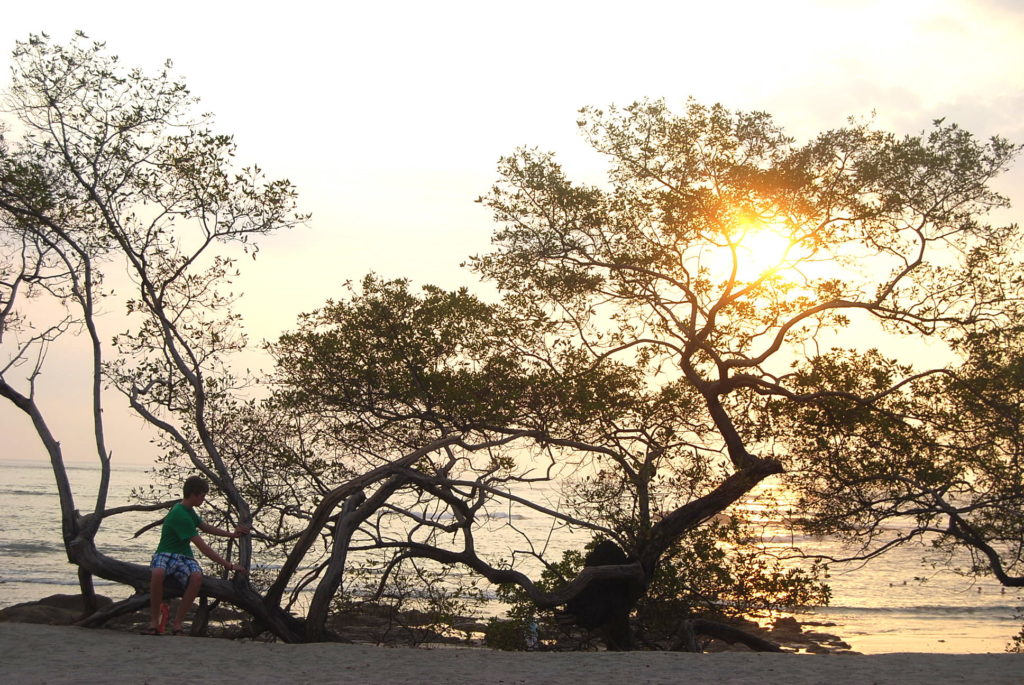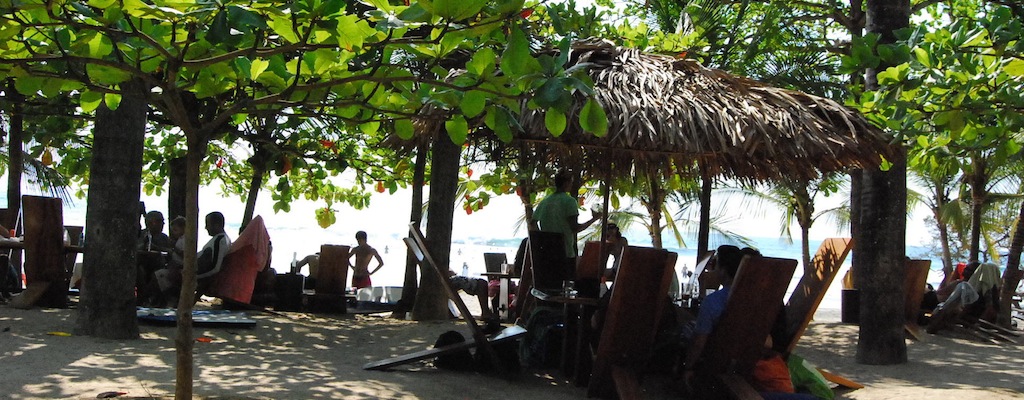What Saved My Son’s Life
Editor’s Note: Nasal Glucagon BAQSIMI was approved by the FDA and is now available in the United States, as of August 2019.
Glucagon—that scary red box that strikes fear into the hearts of caregivers and those who live with type 1 diabetes. We have glucagon at home. We have one at school. We take it on vacation. As a mom to a teenage son with diabetes, I have dutifully filled his glucagon prescription for the past 11 years and have practiced using it on a piece of fruit each year after it expired. But I have never actually used it on my son. Not until this spring, that is.
On our second day in Costa Rica, my son ate a seemingly safe food choice for a developing country—a cooked flatbread pizza, while the rest of us made less-safe choices of salads and ceviche. What we couldn’t know was that the cheese used on the pizza at this beachside restaurant was tainted with a toxin and within an hour my son was experiencing signs of food poisoning. What this means for someone with diabetes is that his body immediately knew it would reject the food, and so it did not use the 12 units of insulin that my son had delivered to metabolize the carbs.
Our first sign that something was wrong was a dangerously low blood sugar of 37. When his blood sugar only went up to 60 after drinking 16 ounces of Coke, I became a little concerned. A short time later the nausea set in and I knew we had to act quickly. I sent my husband and older son tearing down the rocky beach to fetch the glucagon, which was back in our hotel room. It would be a 25-minute round trip sprint before my son returned (with very cut up feet) with the glucagon; 45 minutes before my husband could get back with the car.
Shortly after my husband and son left us to race to the hotel, the projectile vomiting began and with it, the drop in my son’s blood sugars resumed. It was the longest 25 minutes of my life waiting for that shot of rescue glucagon, not sure if my son would have a seizure, or worse. The scene was pure chaos as the group of locals tried to offer assistance to the poor gringo mother and her vomiting son. How do you say, “He has diabetes; this is an emergency” in Spanish?
The glucagon arrived, and with trembling hands and without any daylight left I gave my son the life-saving injection. I was so thankful I had practiced using glucagon every year; in an emergency, it is very difficult to stay calm and read directions! Even still, I was unable to get all of the glucagon out in the one large needle, so I gave the rest using his emergency insulin syringes that we had in his insulin pump site change kit.

We made it back to the hotel and a doctor came about an hour later to hook my son up to an IV. By this point he had large ketones and was in desperate need of IV dextrose to elevate his blood sugar enough to give him some insulin and fluids to rehydrate him. This combination of dextrose and fluids was crucial to flushing out his ketones. The next day he was rushed by ambulance from our remote location on the beach 4 hours south to a private hospital in the capital, San Jose, where he spent the next three days recuperating.
It was a modern hospital where he received wonderful care, and so I asked for two things: another glucagon—in case he got food poisoning again. Since this wasn’t a virus, something to which he could build up resistance, it could happen again at any time. And I asked for ketone strips—we blew through a 50-pack in three days! Even in the hospital I was doing the ketone testing.
Their response: Glucagon, no can do. It’s too expensive to keep so they haven’t had glucagon in Costa Rica for over 10 years. Ketone strips: it was VERY difficult to get them and when we did, they were enormous strips that tested everything from ketones to pregnancy, it seemed, and was not something they were prepared to test for in the hospital.
After three days he was released, and we enjoyed a completely modified trip to Costa Rica, staying near the capital rather than in the jungle as planned. We are a family that loves to travel together. We have lived overseas with our type 1 son, and even managed to obtain and program a new pump in French when his insulin pump broke while on vacation in France. Travel adventures are wonderful and I don’t ever want us to limit them, but here are a few things I learned to make our overseas travel even safer:
- Always have glucagon READILY available. Taking it on vacation but not taking it on your day trip that is one-hour away from your hotel will do you no good!
- If you use your one glucagon, you will want to have another on hand. If the doctor hadn’t been able to come when he did, I may have needed to use a second glucagon just to raise my son’s blood sugar enough to give some insulin.
- If you get sick, one bottle of ketone strips may not be enough. Pack a second bottle.
- If you travel internationally or to remote places in the US always take double of everything—not just double your pump supplies.
- Before you go on vacation, and do go on vacation(!), be sure you know where the closest hospital is.
- If you’re traveling to the developing world, find out from your hotel if there is a doctor who makes house calls in case of food poisoning. I can’t imagine how our trip might have turned out without the doctor treating my son at our hotel.
Be prepared. Be safe. And Bon Voyage!
Also from Bonnie “The Stomach Flu Away From Home-Prepare Your College T1D”
From the Beyond Type 1 Team “Traveling with T1D“





